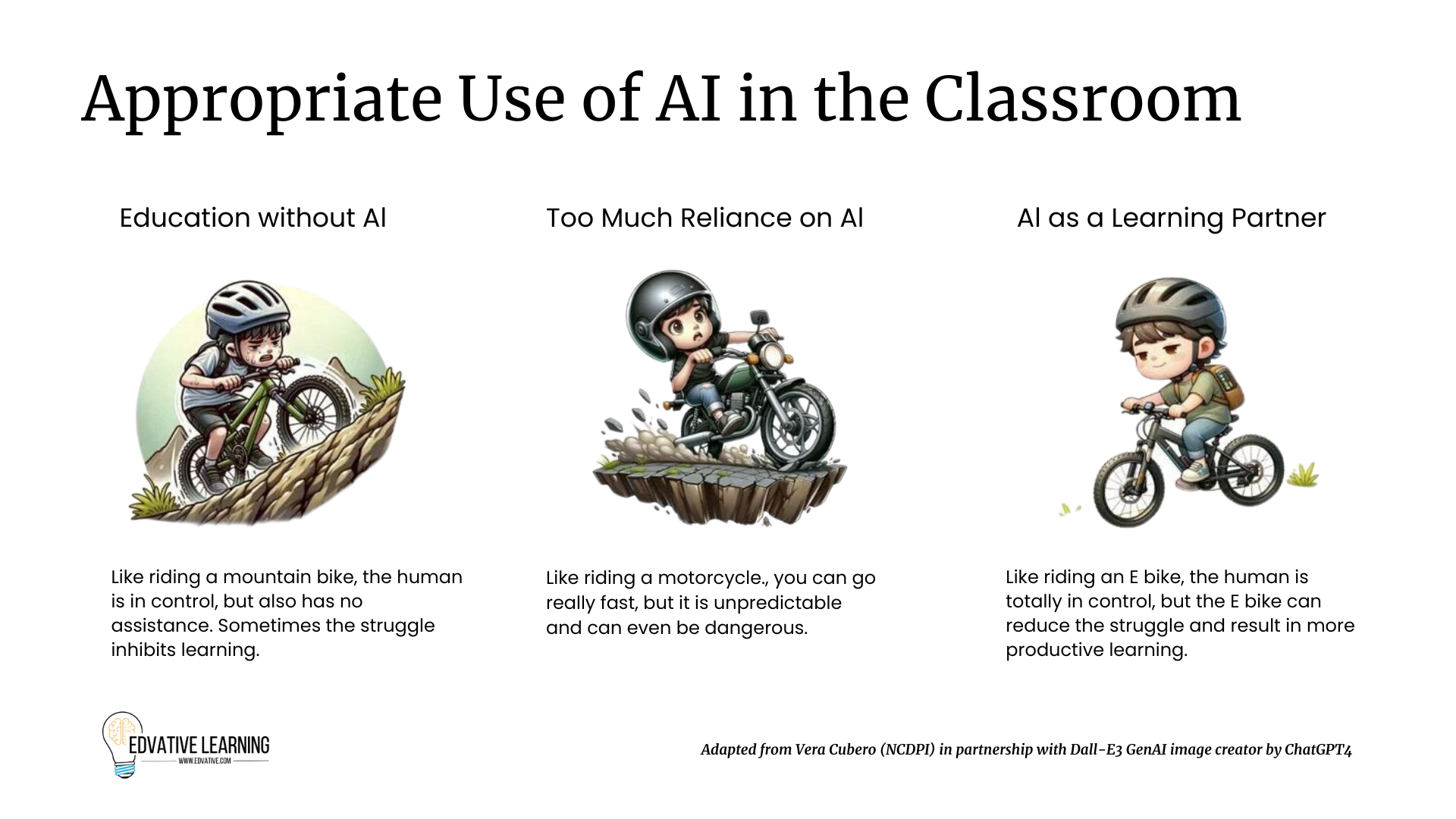Need an easy way to explain the need for ai in your school?
Implementing the E-Bike Model of AI in Schools
The US Dept. of Education’s “Artificial Intelligence and the Future of Teaching and Learning: Insights and Recommendations” includes one of the best analogies on how AI can provide a technology-enhanced future. In their guide, the Office of Educational Technology envisions AI to be used more like an electric bike and less like a robot vacuum.
They explain that while robot vacuums do the user’s job without human involvement or oversight, when using an e-bike the human is both fully aware and fully in control, but the user’s burden is lessened and their effort is multiplied by a complementary technological enhancement.
The Mountain Bike: Traditional Learning Without AI
The mountain bike represents the traditional learning environment without the assistance of AI. In this setting, students face various challenges and obstacles that require significant effort to overcome. Just as a mountain bike requires manual effort to navigate rough terrains, students in a traditional learning setting may struggle with the lack of personalized support and resources. This can hinder their ability to effectively learn and engage with the material, especially for those who may require additional assistance.
The Motorcycle: Excessive Dependence on AI
On the other end of the spectrum, the motorcycle symbolizes an educational approach that relies too heavily on AI, without proper understanding or control by educators and learners. This scenario can lead to unpredictable outcomes and potential harm, similar to the risks associated with operating a motorcycle. Overdependence on AI can diminish the role of human interaction, critical thinking, and the development of problem-solving skills. It may also lead to a lack of accountability and understanding of the learning process, as students become passive recipients of information.
The Electric Bike: The Ideal Use of AI in Education
The electric bike, or e-bike, embodies the optimal use of AI in educational settings. In this model, AI acts as a learning partner that supports and enhances human efforts without taking full control. Educators and students remain in the driver's seat, fully aware and in charge of the learning process. AI tools and platforms can provide personalized learning experiences, adapt to individual needs, and offer insights that help teachers tailor their instruction more effectively. This approach ensures that the use of AI in our schools amplifies human capabilities, reduces struggles, and leads to more productive and engaging learning experiences.
Ideally, AI would be used like an e-bike, with the human in control. By embracing this analogy, we can enhance learning experiences, reduce educational disparities, and prepare students for a future where technology and human ingenuity coexist harmoniously.

